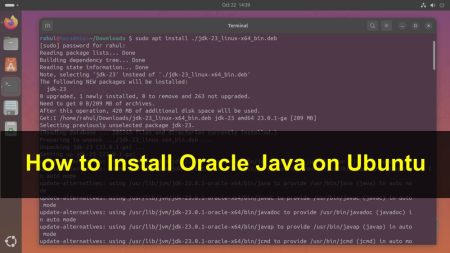Java, one of the most popular and widely-used programming languages, provides several mechanisms for initializing and working with variables. One of the interesting features of the Java programming language is the ability to create and use static fields. Static fields belong to the class itself, rather than to any specific instance of the class. This means that they’re shared across all instances of the class. Initialization of these fields is crucial, as it determines the default state of the class.
In this article, we will explore different methods for initializing static fields in Java: during declaration, using a static initialization block, and via static methods.
1. Initialization during Declaration
The most straightforward way to initialize a static field is during its declaration. When declaring a static field, you can directly assign a value to it.
public class Sample {
static int staticVar = 100;
}
In this example, staticVar is a static field of Sample class that is initialized with a value of 100 during its declaration.
2. Using a Static Initialization Block
A static initialization block is a block of code that is executed when the class is loaded. It’s used to initialize static fields when the initialization requires some logic or multiple lines of code. It is denoted by the static keyword followed by a pair of curly braces.
public class Sample {
static int staticVar;
static {
staticVar = 100;
System.out.println("Static initialization block executed.");
}
}
In this example, when the Sample class is loaded, the static initialization block will be executed, initializing staticVar to 100.
3. Using a Static Method
Sometimes, you might want to use a static method to initialize a static field, especially when the initialization logic is complex and reusable. A static method is a method that belongs to the class, rather than any specific instance of it.
public class Sample {
static int staticVar = initialize();
static int initialize() {
System.out.println("Static method executed.");
return 200;
}
}
Here, the static field staticVar is initialized using the initialize static method.
Working Example
To better illustrate these methods, let’s consider an example:
public class Example {
// Initialization during declaration
static int field1 = 10;
// Initialization using a static block
static int field2;
static {
field2 = 20;
System.out.println("Static block initializing field2");
}
// Initialization using a static method
static int field3 = initializeField3();
private static int initializeField3() {
System.out.println("Static method initializing field3");
return 30;
}
public static void main(String[] args) {
System.out.println("field1: " + field1);
System.out.println("field2: " + field2);
System.out.println("field3: " + field3);
}
}
When you run this Example class, you’ll observe the following order of execution:
OutputStatic block initializing field2 Static method initializing field3 field1: 10 field2: 20 field3: 30
Conclusion
Static fields are essential components of Java, providing a means to store data that’s shared across instances of a class. Proper initialization of these fields ensures that the class starts in a consistent and predictable state. Java offers multiple mechanisms for this initialization to accommodate various scenarios – from simple assignments during declaration to more complex logic in static blocks or methods. By understanding and leveraging these techniques, developers can ensure robust and efficient class design in their Java applications.

